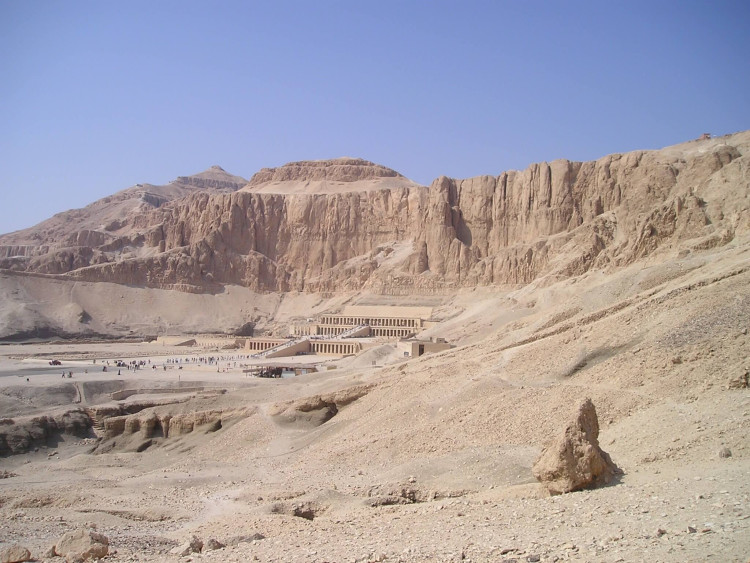Valley of the Kings in Egypt - rock stone complexes and tombs
Where is located Valley of the Kings?
Address of Valley of the Kings is Egypt
show on map
When was built Valley of the Kings?
Built date of Valley of the Kings is XIV century BC

Facts, informations and history of Valley of the Kings
For 1700 years, the Egyptians hid their dead kings in pyramids and tombs. The grave of Thutmose was built in the rock cave of the valley called Biban el-Muluk, now known as the Valley of the Kings. Next, more tombs were built here, now there are 64 of them. The burial chambers were hidden in rock caverns, and the temples of the pharaohs were placed on the plain.
Most of the pharaohs' tombs in the rock gorge at Thebes West were lavishly decorated with wall paintings depicting the life of the deceased or imagining the world of the dead. It tempted thieves to steal.
When archaeologists began excavation at the beginning of the 19th century, not one tomb was intact. After thorough searches for graves, it was stated that there are no more unpolluted tombs. But the most sensational discovery came later, when the English archaeologist Howard Carter discovered the tomb of Pharaoh Tutankhamen.
In this tomb were found, among others: a sarcophagus of gold, gold diadems and masks, jewels, statues, chariots, weapons, decorations and paintings. Their number was so great that it took over three years to take them all up.
In many tombs we can find interesting murals depicting eg scenes from everyday life of Egyptians, scenes from the afterlife according to the Book of the Dead, scenes from the night journey of the sun god through the world of the underworld in his barge and scenes showing the gods and goddesses with heads of animals.
Construction/building type
Building Valley of the Kings is of type Tombs
Architectural style
Architectural style of Valley of the Kings is Ancient Egyptian
Ancient Egyptian architectural style was specific to Egypt between 3150 BC and 395 AD and was uniquely characteristic of the country and its culture. Egyptian architecture was inspired by the landscape and climatic conditions of the region and by the ever-growing needs of the society. ... czytaj więcej.
What material is the building made of?
Valley of the Kings is made of the following materials: Stone, rock
Is the building on the UNESCO World Heritage List?

The listing took place in the year 1979.
Details of the entry are available on the Unesco website at https://whc.unesco.org/en/list/87/
Official website
The official website of the building, where up-to-date information can be found, is http://www.sca-egypt.org/eng/SITE_VOK.htm
Location on map / How to get there

















Comments to Valley of the Kings (21) Average rating: 4,0 Add comment / Rate building
Based on 21 comments